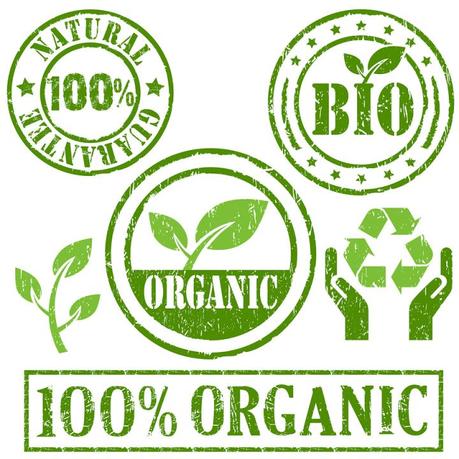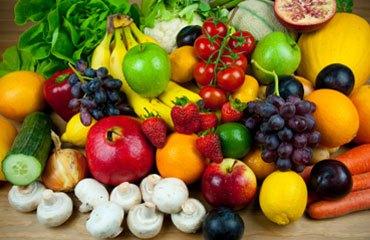Before I started school and learned about all this nutrition stuff, I was still a pretty decent fruits and veggies eater! I’d snack on baby carrots, saute veggies to go with my eggs, experiment with different ways to cook asparagus and brussel sprouts, pick up a piece of fruit rather than the Ben & Jerry’s pint of ice cream I really wanted to be eating.
Then, one day, as if out of nowhere, I started to see certain fruits, veggies and food labeled as “Organic.”

I didn’t know much about what qualified a food product as organic. All I understood was how it was advertised to us – it’s healthier for you, so eat it! Healthier?! OK!
So I’d shell out the extra cash for the organic bananas and march around the supermarket aisles, feeling all high-and-mighty because I was obviously far more progressive than the couple buying regular crackers. Don’t they know that’s not ORGANIC?! EW!
I deluded myself into believing because I bought organic bananas one day and was balls-to-the-wall embracing healthy living, that qualified me to diagnose every ailment you had to be a result of the unfortunateness (this is a word, don’t question me) of your organic nutrition stupidity.
So I’d get this a lot….
Why someone didn’t open-palm slap me is a miracle of God. Especially because I really had no idea if what I was buying was truly organic or what the word even meant.
Federal Organic Guidelines (NOP)
Organic is a relative term. Just because a product is labeled ‘organic’ does not mean that there aren’t non-organic materials included. Labels can be quite misleading, which is why the NOP was adopted in 2002. The California Certified Organic Farmers (CCOF) created the NOP guidelines and certifies adherence throughout North and South America.
Basic prohibitions: conventional pesticides, fertilizers made with synthetic ingredients or sewage sludge (they tried to get that approved!), GMOs, ionizing radiation, and antibiotics or growth hormones.
There are 3 different definitions of ‘organic’, and this wording is what you need to pay attention to when looking at food label claims.
- 100% organic – All ingredients are grown and raised to NOP guidelines.
- Certified organic – 95 to 99% of ingredients are by NOP standards; 5% of the ingredients are non-organic but still approved by the NOP
- Made with organic ingredients – 70 to 94% of ingredients follow NOP guidelines; the remaining 30% are approved, non-organic ingredients.
So, what good is that “Made with organic ingredients” box of crackers when you’re still ingesting up to 30% ingredients treated with pesticides, sewage sludge and radiation?

Source
Organic Fruits & Veggies
Your store’s produce travels an average 1,500 miles to get to you. In order for the food to stay fresh (because we don’t want perishable food to…perish), they are heavily sprayed with chemicals. For example, baby carrots are dunked in chlorine to stay fresh and give them that shiny, “wet” look. Yum.
All this information can be very overwhelming and sometimes families simply don’t have the extra money to buy ALL organic produce. My suggestion, then, is to focus on the produce that is the most highly sprayed:
apples, bell peppers, blueberries, celery, cucumbers, grapes, lettuce, nectarines, peaches, potatoes, spinach and strawberries
Now, I’m a longgggg way from perfect with this. My house isn’t filled with organic food products and I’m not about to start my own compost garden in the back yard (that’s my dream for when I get my own house


Nom nom nom
Question of the day:
Do you currently buy any organic products?



